| | A first impression
Palmeira
In front of the bay of Palmeira is a large tanker at anchor, which provides the supply of kerosene for the airport. For this there are two pipelines in the bay where you have to pay attention when anchoring. In the bay you will find several boats, such as tourist boats that have been out of order for years, fishing boats in all shapes and sizes and of course the necessary sailing boats. Some sailing boats have been lying here for many years, given the dramatic condition in which they find it selves. Even a very small boat with a Dutch flag that is barely visible and of course some sailboats from world sailors like us. The beach consists partly of sand, rocks, some bushes and bare trees. In the background a huge complex of SHELL, some large houses that are partly deserted and in the distance some volcanic hills.
After we have launched the dinghy we sail, zigzagging between all boats to the side. At the quay it is a jumble of mooring lines that we have to avoid. There are already two boys waiting for us who want to pay attention to our dinghy. Franz has already warned us not to go into this, because before you know it there are dozens of little boys who want to have € 1.00 - € 2.00 for this. There is enough social control here so the dinghy with an extra chain is not necessary yet. A few days later it appears that boys have started sailing with the dinghy of our German friends. They are then whistled back by a number of adults, but from that moment on we still fix the dinghy extra with the steel cable. Not entirely unnecessary, because we notice that the lock has been tampered with. These boys are a bit pushy, they keep asking it every time to be able to fit the dinghy. One evening we see a boy running very fast towards the dinghy when we go back to the quay. Then he says with a steel face that he has paid attention to the dinghy and wants to have € 5.00 for this. Yes, goodbye, he can nicely go into a tree.
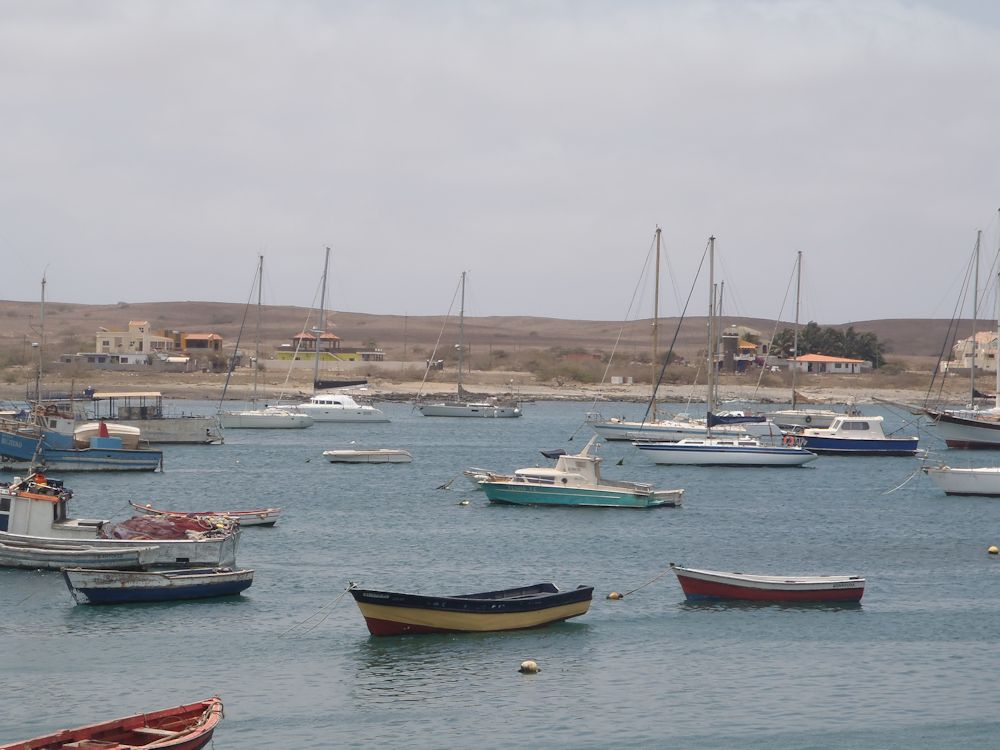
Our Pegasus is in the middle at the back
At the quay is a low section which serves as a kind of fish auction where the fishermen sell and clean their newly caught fish and where the water turns red from the blood. The catch is different every day and over the days we find the following fish species: small mackerel, large yellowfin tuna, red Snapper, Wahoo, the common and the red Dorade.
Grote geelvin tonijn
Underneath a large tree is a wall where some males are chatting with each other. In the village there is a relaxed atmosphere, here you can taste the life of the local population. Women with colourful clothing carry large baskets on their heads with all kinds of merchandise. The wheelbarrows are also very popular here to transport and sell their goods. The houses here are mostly square and painted in all kinds of colours. Some houses have beautiful wall paintings, including all islands on them. Here you see some abandoned and / or unfinished houses. The streets are neatly paved with pebbles, but unfortunately not everywhere evenly so we have to be careful where we walk. When we walk through the village, it is noticeable that it is so clean here, no mountains of sand next to the road or waste on the ground. We do not see much later that three ladies walk around with a bin and broom. What a big difference with Gambia!
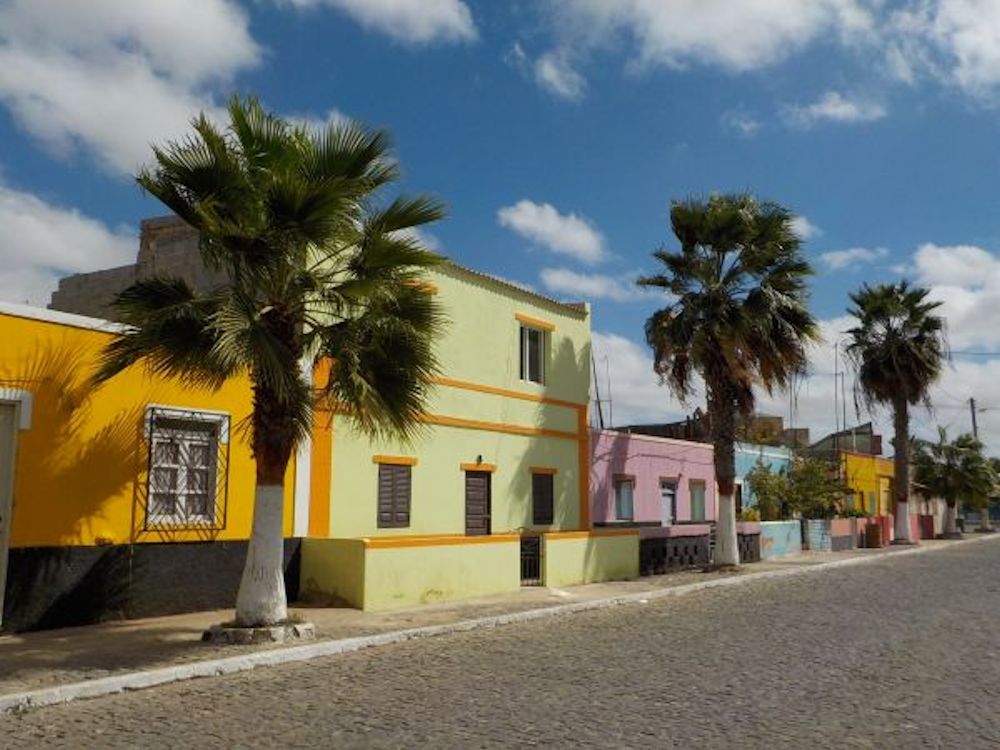 |
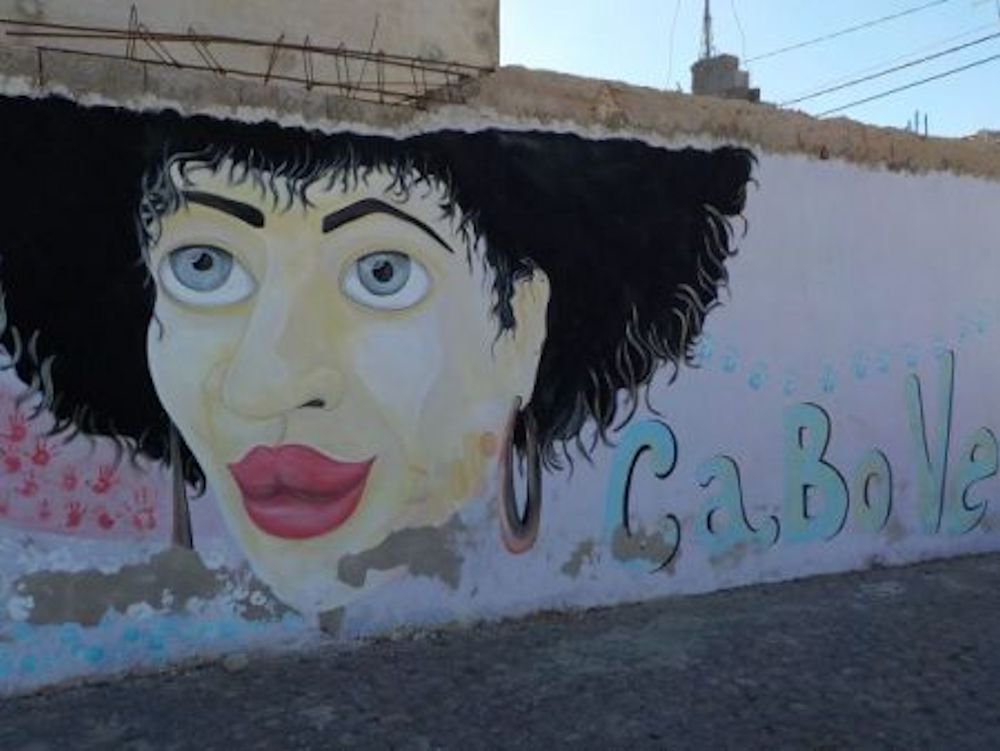 |
At the quay there is a small church called 'Capelo de Sao Jose' and a rather large artwork. Behind it is the place where boats are built or restored, real expert work.
There are some squares with mini supermarkets and we also find a supermarket run by Chinese. We find here a number of Dutch products that are quite the price. To our surprise they even have a tube of Zaanse mayonnaise!
I immediately take a picture and send it to our friends who live in Zaandam. In this relatively small shop, about 13 people are keeping an eye on things. I feel a bit embarrassed when I walk through this store and prefer the other local shops where they are much friendlier. In one of the small bars, where the locals drink alcohol, some men play the famous game 'Ouril' (I'll tell you more about that later).
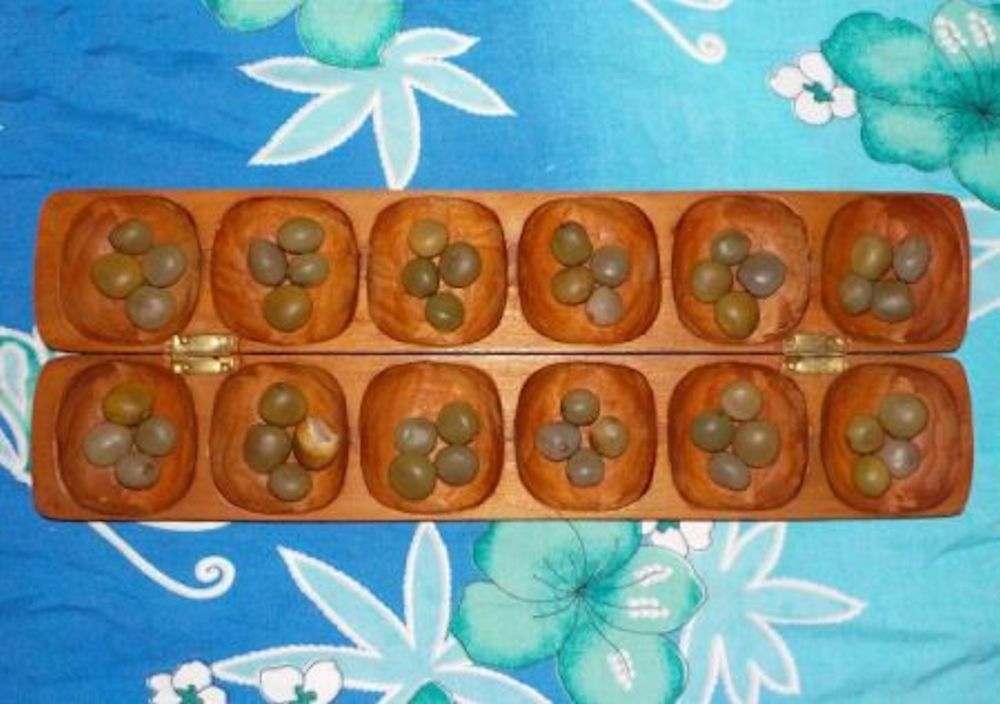 Everywhere dogs walk around freely, of the same kind that we also saw in Gambia and not unfriendly. There is also a public toilet block, at Fontenario you can get water, there is the bar that acts as a discotheque on Sunday and a large building of Socol, where you can buy all kinds of materials.
Occasionally we see a couple of vans arriving with tourists, who take a tour of the village and look at the fish market. Much more is not to be experienced here, so they are soon left again. The first few times we are on the side the souvenirs sellers come to us, but after a few days they know that we 'belong' here and they cannot sell anything to us. Most of these people come from Senegal or Gambia and can speak some Dutch words such as: kijken, kijken, niet kopen, uit Amsterdam / Rotterdam of goedendag.
CLearing
We go to the striking blue building where the police and customs are located to clear us. At the police station we answer the necessary questions and forms are filled out again. We have to leave the boat documents, which we will only get back when we leave. The stamp of the customs in our passport we can unfortunately no longer receive because the customs officer is not present and for this we will come back the next day (before 11:30). However, he also turns out not to be present, but after a third attempt it still succeeds, in payment of € 5.00, to get a stamp in our passport. The customs man tells us that we only have to go to customs on the next island, BoaVista. We have an appointment with Franz and Angela at "Bar Aminda", on a small square where we drink coffee. There we meet another German, Carlos, who has lived here for more than 20 years. Long ago he came here with a boat (the boat has sunk and this seems to be the wreck that you have to take into account in the run-up) and never left. The official language on the Cape Verde Islands is Portuguese and Creole and some also speak English. We try to say as much as possible in Portuguese / Creole, even if it is in the beginning only thank you "obriagada (o)", good day "bom dia" and goodbye "Cio" (creole). This is certainly appreciated by the local population. Diagonally opposite from this bar is the bakery 'Pandaria Portuguesa', where you can buy good bread and all sorts of tasty things. After coffee we buy, in a small shop in the main street, our internet sim cards from UNITEL T + (or CV Movel), € 8.00 2GB. In this shop they sell school stuff (for actually high prices), you can use the internet and there are even three old-fashioned cabins where you can call. What is practical, is that you can also pay with euros here, € 1.00 equals 100 Escudos.
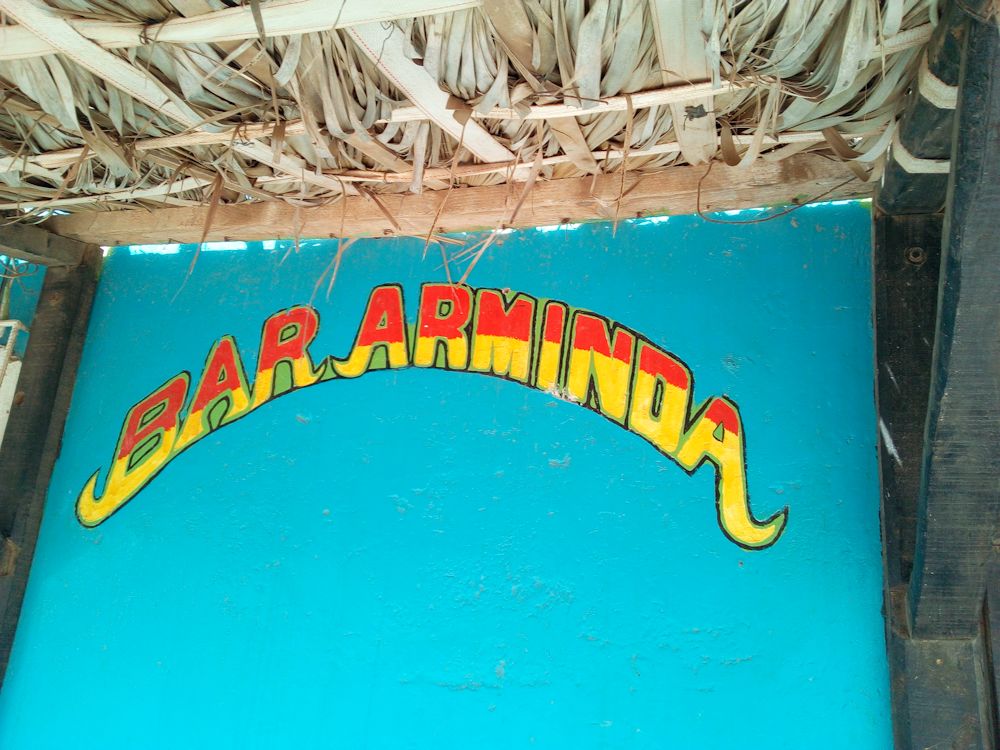 Espargos, the capital of Sal
There are small vans running around constantly to the city of Espargos. They wait until the van is full before leaving. A ride costs only 50 Escudo (€ 0.50) per person. It is about a 15 minute drive on a reasonable asphalt road over the bare plain of the island of Sal. A volcanic dry and arid island with a desert landscape where very little is growing. Along the road we see some more waste, especially plastic bags that are taken away by the wind and stick to the bushes. The town is much more modern than Palmeira, with beautiful buildings, shops, banks, restaurants and a number of churches. Here too, the houses are painted in various colours and beautiful wall paintings can be found on empty walls. We see women who use wheelbarrows to sell their fruit and vegetables on the street. The supermarkets really have everything, but often at European high prices. After all, everything must be brought here. Even fruit and vegetables are often supplied by the other islands. The church on the square is painted bright blue here, which makes a church a lot more attractive in itself. We are looking for a bank to debit and have lost € 2.00 in additional bank charges. Then we drink something on a terrace, where we immediately update our apps and then walk through the town a little to get a first impression. There are many shops closed because it is around noon and therefore siesta time. Nice time for us to also have lunch. We do this at 'Bom Dia'. Here we find a sticker on the façade that shows that they do not have turtles on the menu. In the past, the turtles were one of the most important food sources for the people of Cape Verde. The turtles themselves were used for their meat and the little ones were taken away and raised so that they could be eaten later. This has been banned for several decades. After lunch we take a look around at the, again opened shops, and then take the van back to Palmeira. We will definitely come here more often.
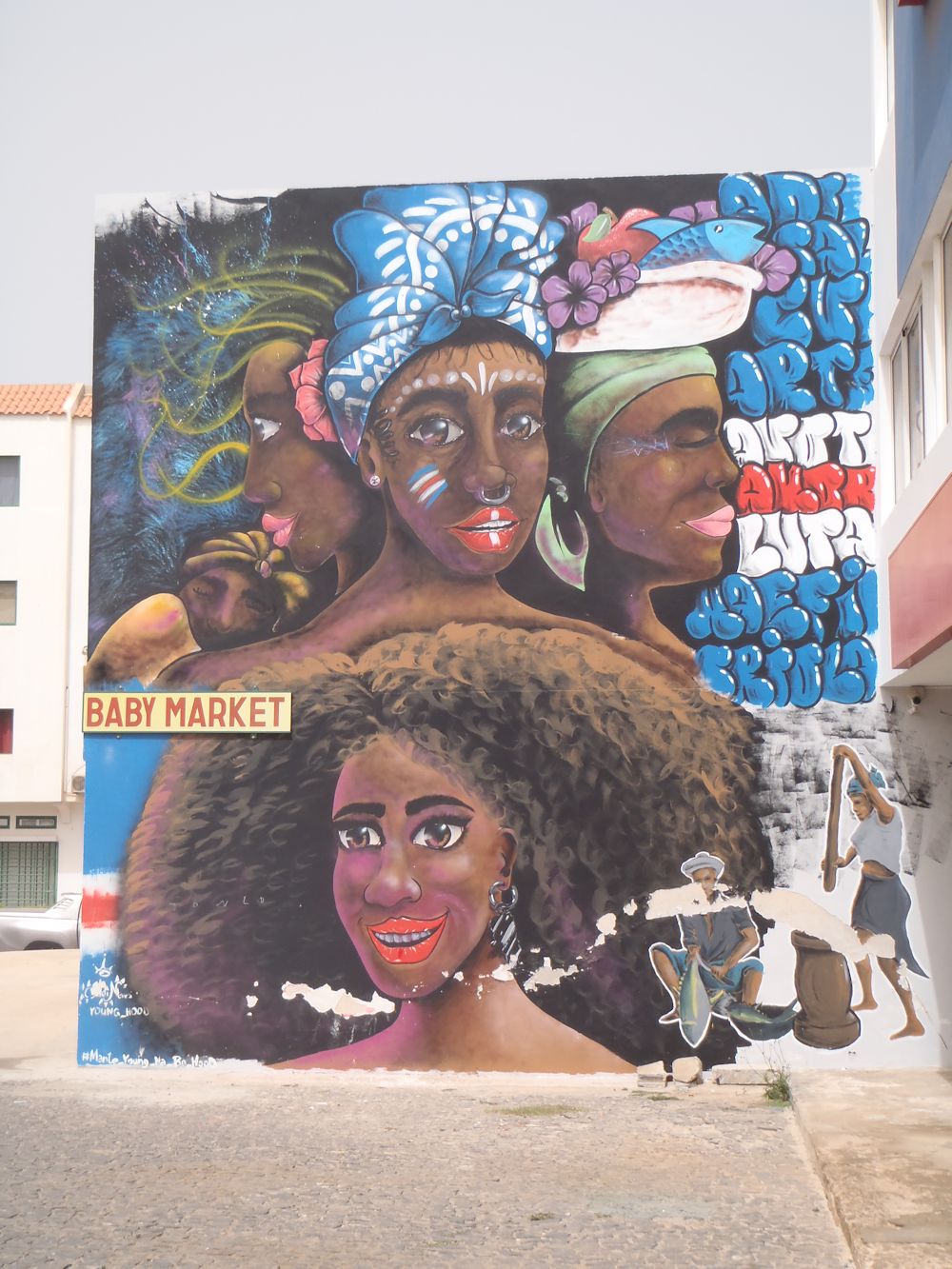
The sign 'Baby Market' refers to the mini supermarket behind it
Eating and eating out
There are several options for eating out. We prefer to eat at the small local tents, but we have not immediately discovered them. We go with our German friends, Franz and Angela, first have a drink at the bar 'Aminda'. We are glad that we have long trousers and a vest is certainly not an unnecessary luxury during the evening. Suddenly a little girl comes to us, who lives on the other side of the square, gives the men a hand and Angela and me spontaneously kiss. Sweet! We go out to eat at a Portuguese restaurant 'Gata Fish', a fairly modern restaurant with a nice service. It is good food and the prices improves on acquaintance. It is still remarkably quiet, but perhaps we were still a bit too early for the Cape Verdeans.
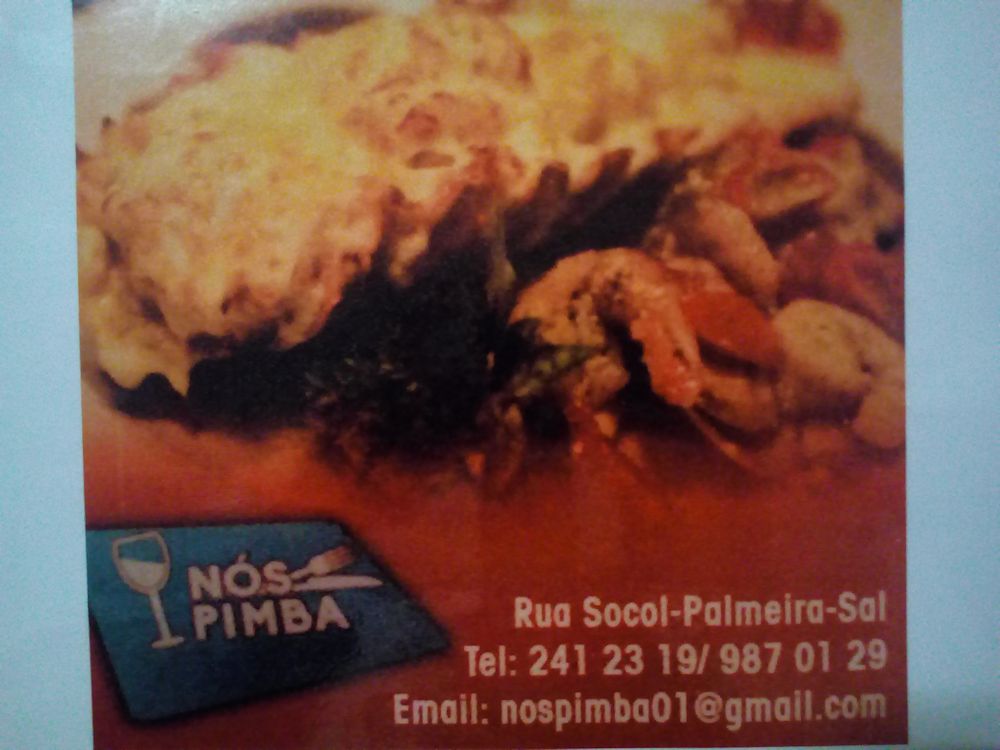 On another day we walk through the streets of Palmeira and discover a small restaurant 'Nos Pimba' where we are the only one and are served friendly by a lady. The food is very good and she pours us very large full glasses of red wine. For this meal and plenty of drinks we only pay € 40.00 with 4 people, which is certainly not much. On Sunday evening it is a lot more lively in Palmeira, a part is even closed for cars. First we have a drink at Aminda where already cheerful tipsy people hang up against us telling all stories we do not understand. We have dinner at the restaurant on the quay 'Esplanada Rotterdam'. Little disappointing that they do not speak or understand Dutch .... But the food and wine is good. At the bar 'Capricornio' it is a cozy busy on the dance floor and also on the street at the quay you can enjoy the music and here too the drink flows abundantly. We mix between the locals and sit on the wall enjoying our wine. On the street are some street BBQ's where you can buy pieces of chicken and skewers with other meat. This is clear THE evening that people are going to forget everything.
 |
 |
Of course, we regularly buy fresh fish at the fish auction which, if we want to, is also cleaned for us. One of the times there are a few small mackerels on the BBQ with Franz and Angela and have a nice evening until the late hours when the wine flows richly. They too will continue to roam around the islands in the coming months. Other times we bake the fish on the boat, which is nice and soft in taste, but where there are unfortunately many small pieces of fise-bone.
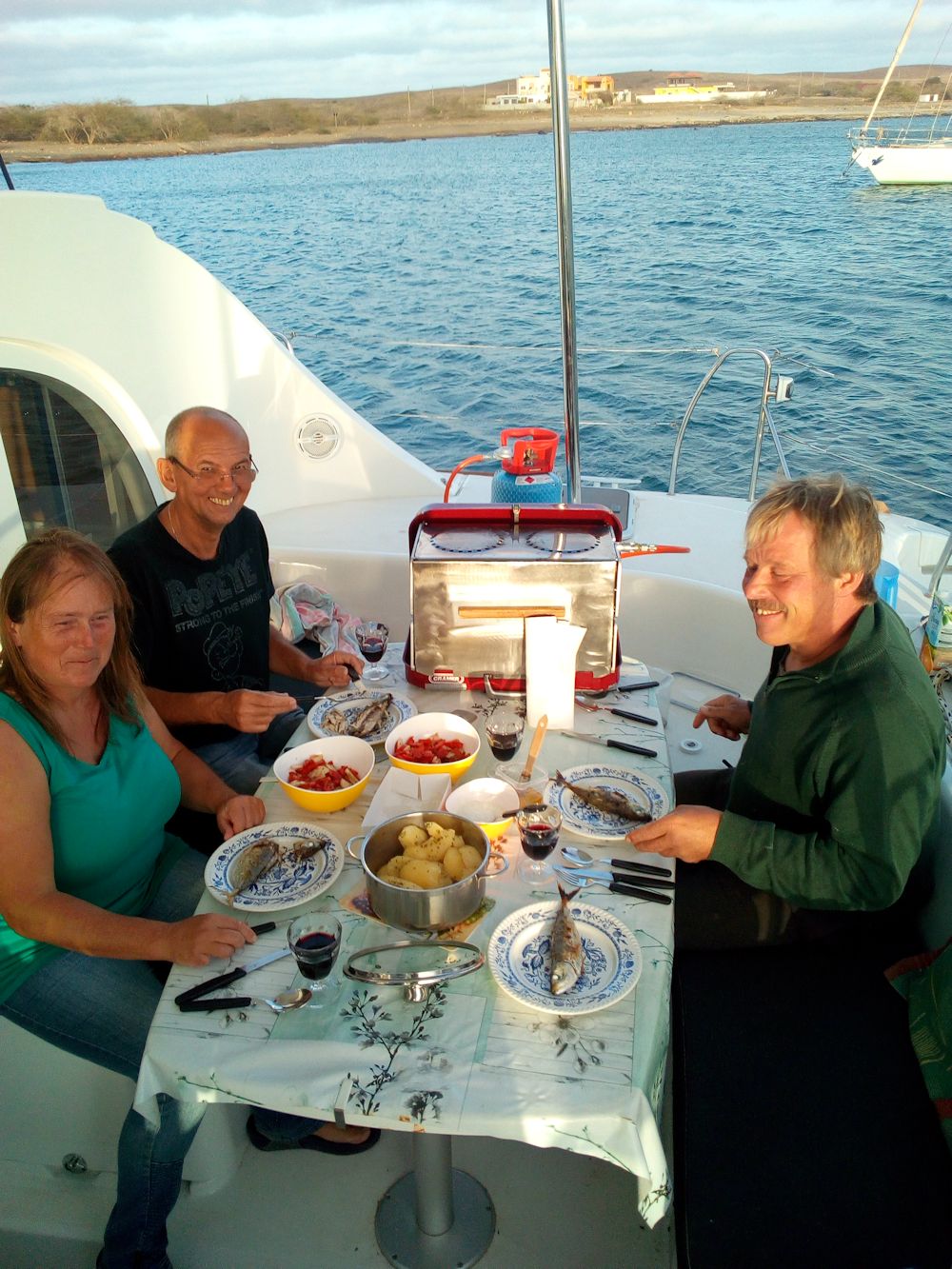
Angela, Fred and Franz
|
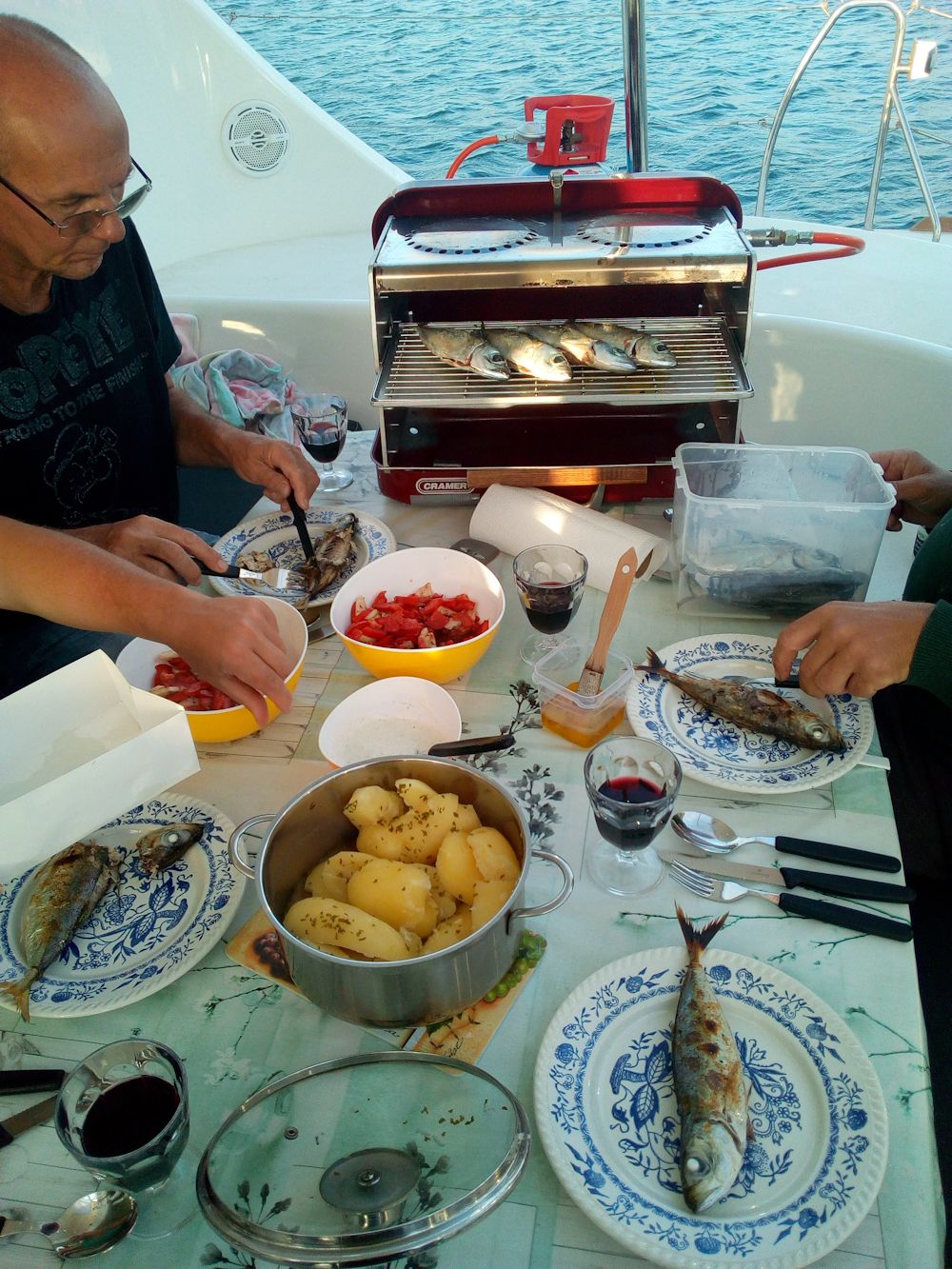
Tasty fish
|
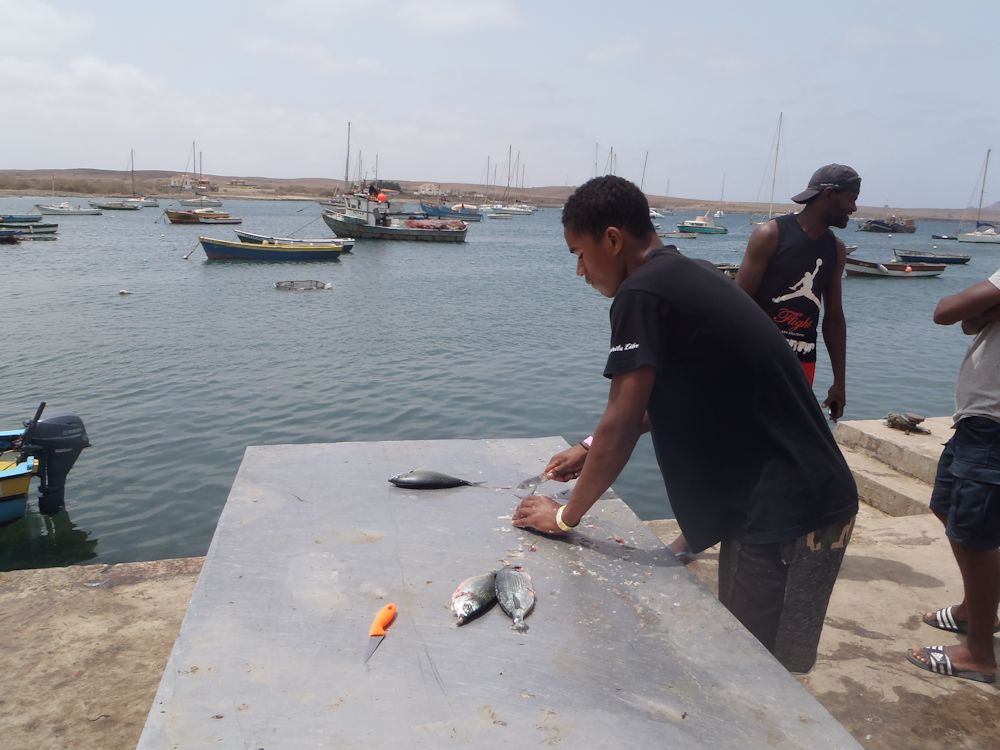 |
 |
Water taxi or fixer
On the quay we meet 'Jay', who we already know from the necessary different stories of other sailors. He is one of the local males who can arrange anything and everything for you. He takes our AH-bag with waste and a day later we deliver our empty gas bottle to him which he will fill for us. The bag he 'forgets' every time to takes it back and it takes 2 days before we get the gas bottle filled return. Our gas cylinder of 6 kg is filled for € 7.50 and the service costs for Jay are € 5.00. Jay can be reached via the radio on channel 12. Another time we have rubbish again, but then there is nobody to find at the quay that can tell us where we can put this. Eventually we meet a nice boy who walks with us to the edge of the village. Along the road to Buracona, on a large empty plain, there is a walled section with a number of containers. We find it strange that there are no more bins or containers in the village for waste. We also see an old 'tourist' submarine 'Neptunus on the side.
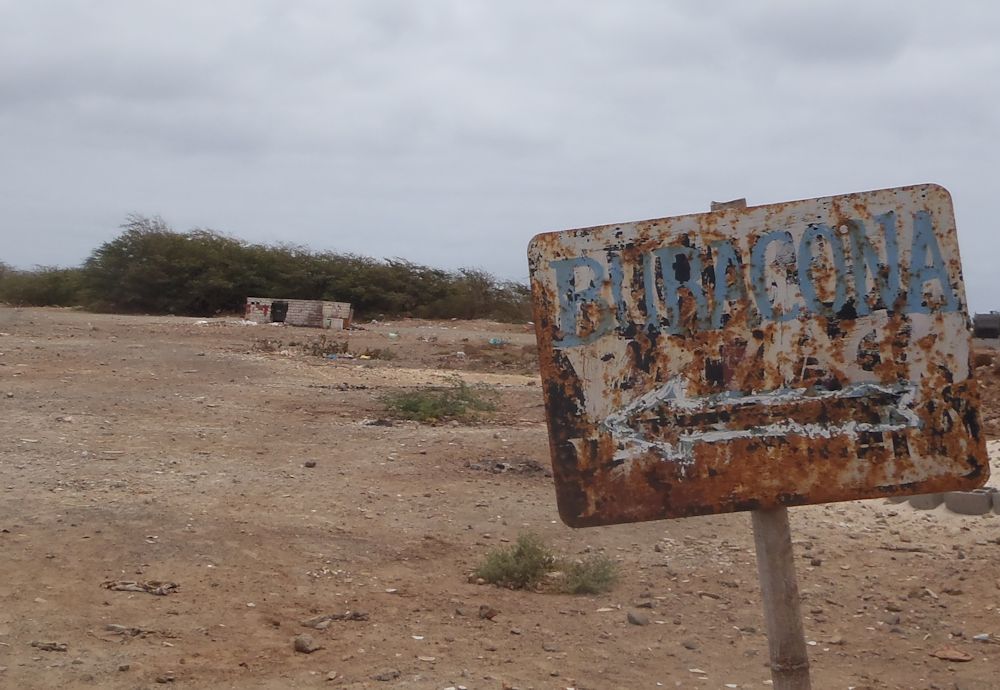 |
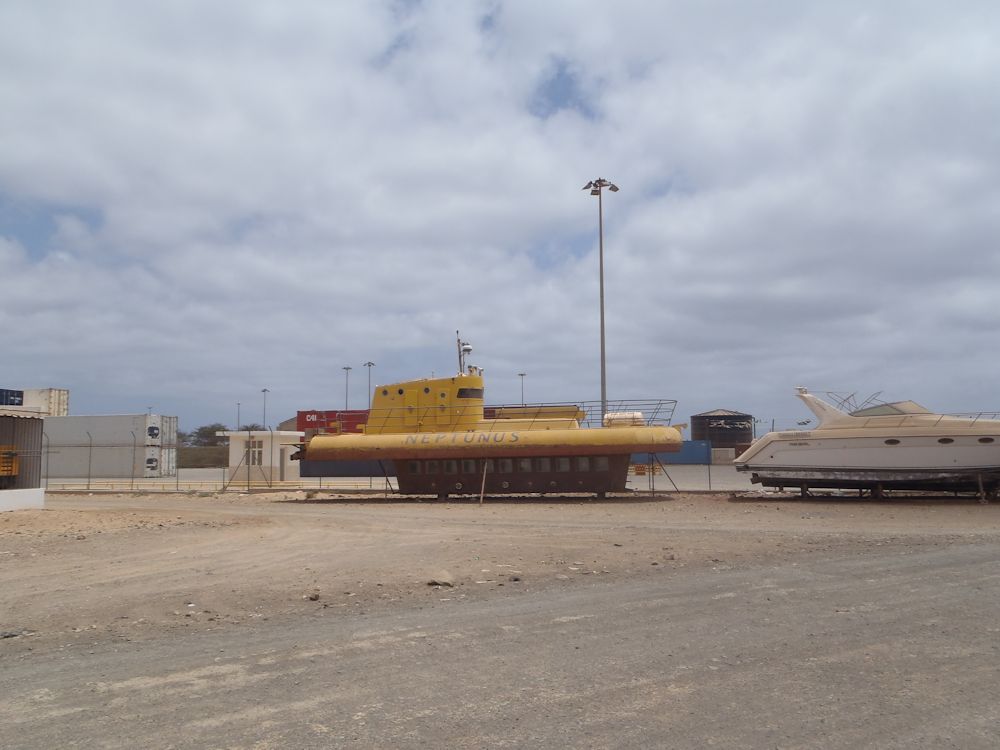 |
Odd jobs
We try to buy a line for the genuarol from the 'Socol' company, but they do not have it. In the large warehouse, which is completely thick under the dust, there is only one major role with line, but not the right size. We try to solve the problem with the watermaker (Osmosea) by flushing it on the advice of the supplier. But up to the present, this has not much effect, the water continues to taste salty. We are very sorry about this, because the watermaker has only been used since January this year. We will continue to mail with the supplier. During the first few days we are busy turning the laundry, tidying up and drying the cages. We also have to find out where the leakage of the fresh water comes from. The light of our compass did not work for a while and fortunately we were able to make it work again. The dinghy we hoist up next to our boat so that it is slightly out of the water to prevent fouling.
Weather
Until now it has always been cloudy with a lot of wind. Only at the end of the day does the wind fall for a moment to rise again in the night. Although the sun shines during the day, it is not much more than a degree of 24 during the day. We are a bit disappointed that it blows so hard here and that on some days (according to the reports) it is much nicer weather in the Netherlands than here.
Planning
Because we will stay for a few weeks at the island of Sal, more blogs will follow about our activities on and around this island.
---------- | |